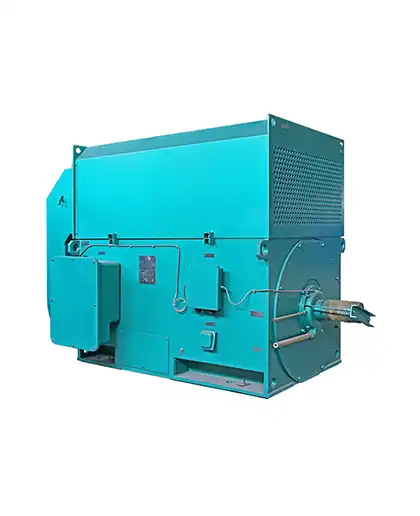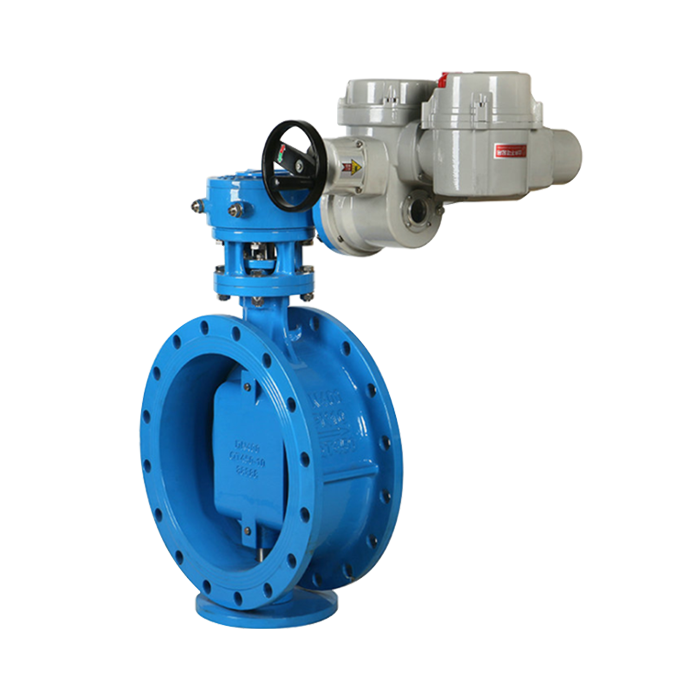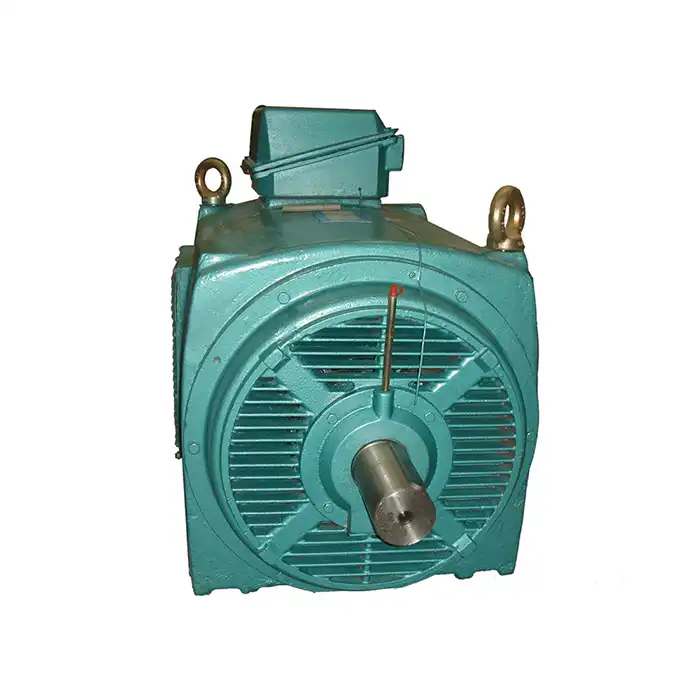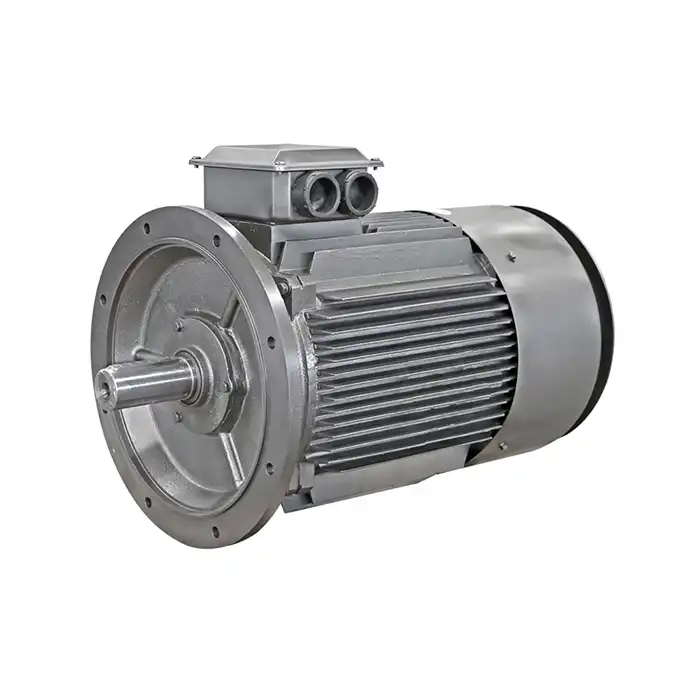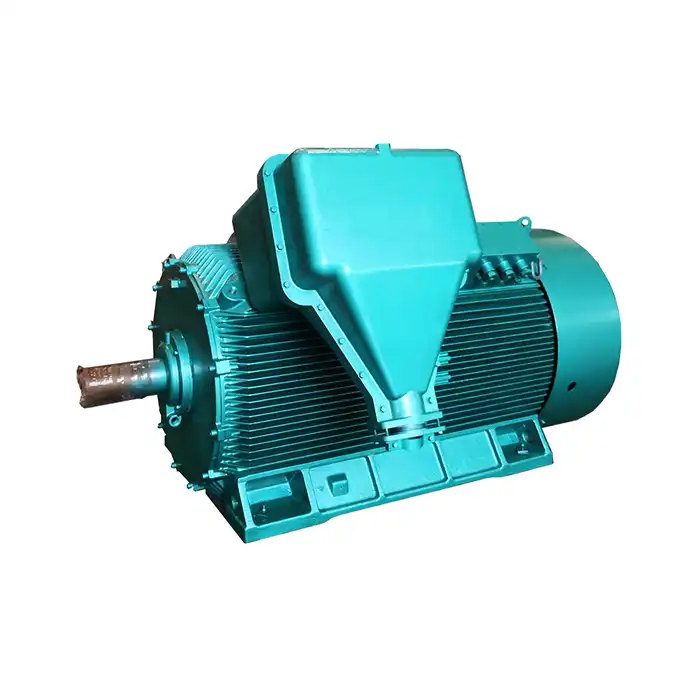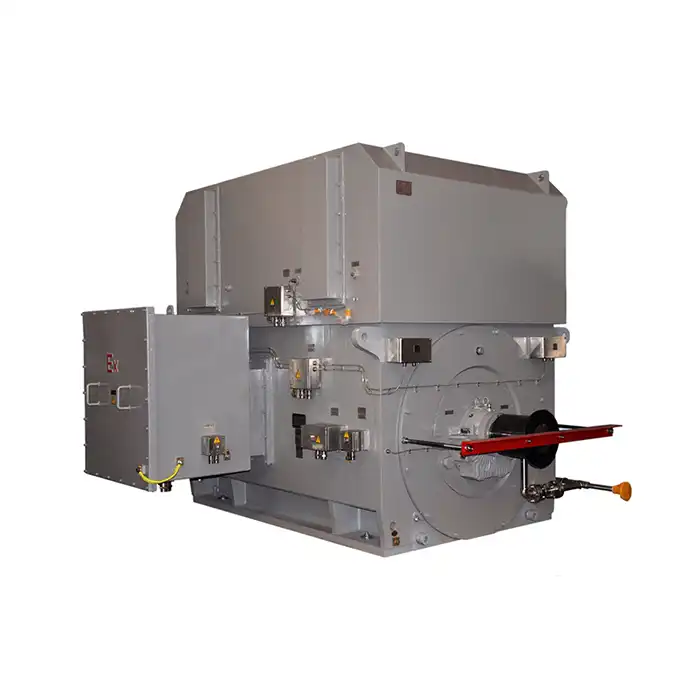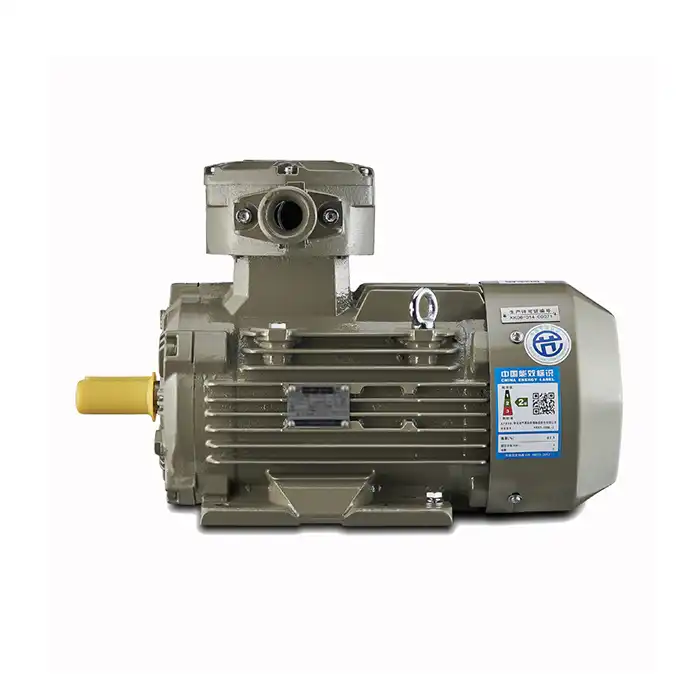How does copper vs. aluminum rotor bar material affect 2500 kW motor lifespan?
When it comes to rotor bar materials for 2500 kW motors, copper and aluminum are the two most commonly used options. Each material has its own set of characteristics that influence the motor's performance and lifespan.
Copper Rotor Bars: Advantages and Disadvantages
Copper rotor bars have long been favored in high-power motors due to their excellent electrical conductivity and thermal properties. In 2500 kW motors, copper offers several advantages:
- Higher efficiency: Copper's superior conductivity reduces electrical losses, resulting in improved overall motor efficiency.
- Better heat dissipation: Copper's thermal conductivity helps in managing heat more effectively, reducing the risk of overheating and prolonging motor life.
- Increased durability: Copper's mechanical strength allows it to withstand high stresses and vibrations, contributing to a longer lifespan.
However, copper also has some drawbacks:
- Higher cost: Copper is more expensive than aluminum, increasing the initial investment for motor manufacturers and end-users.
- Greater weight: Copper's higher density makes the rotor heavier, which can impact the motor's overall weight and inertia.
Aluminum Rotor Bars: Pros and Cons
Aluminum has gained popularity as a rotor bar material in recent years, particularly in smaller motors. For 2500 kW motors, aluminum offers certain advantages:
- Lower cost: Aluminum is significantly less expensive than copper, making it an attractive option for cost-sensitive applications.
- Reduced weight: The lighter weight of aluminum rotors can lead to lower inertia and faster acceleration in certain applications.
- Corrosion resistance: Aluminum naturally forms a protective oxide layer, providing better resistance to corrosive environments.
However, aluminum also has limitations:
- Lower conductivity: Aluminum's electrical conductivity is about 60% that of copper, potentially resulting in higher losses and reduced efficiency.
- Heat management challenges: The lower thermal conductivity of aluminum can make heat dissipation more difficult, potentially affecting motor lifespan.
- Mechanical strength concerns: Aluminum is generally softer than copper, which may impact its long-term durability under high stress conditions.
For 2500 kW motors, the choice between copper and aluminum rotor bars often depends on the specific application requirements, operating conditions, and economic considerations. While copper generally offers superior performance and durability, advancements in aluminum alloy technology have made it a viable option for some high-power motor applications.
What are the fatigue resistance standards for 2500 kW motor rotor bars?
Fatigue resistance is a critical factor in ensuring the longevity of rotor bars in 2500 kW motors. These components are subjected to significant mechanical and thermal stresses during operation, making it essential to adhere to stringent standards and testing procedures.
Industry Standards for Rotor Bar Fatigue Resistance
Several international standards govern the design and testing of rotor bars for large industrial motors:
- IEC 60034-18-41: This standard provides guidelines for evaluating the insulation systems of form-wound windings, including those used in 2500 kW motors.
- IEEE 112: While primarily focused on testing procedures for polyphase induction motors, this standard also includes considerations for rotor construction and materials.
- NEMA MG 1: This comprehensive standard covers various aspects of motor design and performance, including rotor construction and materials for large motors.
Fatigue Testing Procedures for Rotor Bars
To ensure the durability of rotor bars in 2500 kW motors, manufacturers employ various testing methods:
- Cyclic stress testing: Rotor bars are subjected to repeated stress cycles to simulate the forces experienced during motor operation.
- Thermal cycling: This test evaluates the material's ability to withstand repeated heating and cooling cycles, which are common in industrial applications.
- Vibration analysis: High-frequency vibration tests help identify potential weaknesses or resonance issues in the rotor bar design.
- Accelerated aging tests: These tests simulate long-term operation under extreme conditions to predict the rotor bar's lifespan.
For 2500 kW motors, rotor bars are typically expected to withstand millions of stress cycles over their operational lifetime. The exact fatigue resistance requirements may vary depending on the specific application and operating conditions.
Common rotor bar failures in 2500 kW motors and how to prevent them
Despite rigorous design and testing standards, rotor bar failures can still occur in 2500 kW motors. Understanding these failure modes and implementing preventive measures is crucial for maintaining motor reliability and efficiency.
Types of Rotor Bar Failures
Common rotor bar failures in 2500 kW motors include:
- Cracking: High mechanical and thermal stresses can lead to cracks in the rotor bars, particularly at stress concentration points.
- Delamination: In motors with laminated rotors, separation between layers can occur due to thermal expansion and contraction cycles.
- Porosity: Manufacturing defects or material impurities can result in porous areas within the rotor bars, weakening their structure.
- End ring failures: The joints between rotor bars and end rings are often susceptible to fatigue and can fail under high stress conditions.
Preventive Measures for Rotor Bar Durability
To enhance the durability of rotor bars in 2500 kW motors, consider the following strategies:
- Optimized design: Utilize advanced finite element analysis (FEA) tools to identify and mitigate stress concentration points in the rotor bar design.
- Material selection: Choose high-quality materials with proven fatigue resistance properties, such as copper alloys or specialized aluminum alloys.
- Manufacturing quality control: Implement strict quality control measures during the casting or fabrication process to minimize defects and ensure consistent material properties.
- Thermal management: Incorporate efficient cooling systems to minimize thermal stresses on the rotor bars.
- Preventive maintenance: Conduct regular inspections and vibration analysis to detect early signs of rotor bar deterioration.
- Operating within design limits: Ensure the motor is operated within its specified voltage, current, and speed ranges to prevent excessive stress on the rotor bars.
By implementing these preventive measures, operators of 2500 kW motors can significantly extend the lifespan of rotor bars and minimize the risk of unexpected failures.
Conclusion
The durability of rotor bar materials in 2500 kW motors is a complex interplay of material properties, design considerations, and operating conditions. While copper remains the preferred choice for many high-power applications due to its superior electrical and thermal properties, advancements in aluminum alloy technology have made it a viable alternative in certain scenarios. Adhering to industry standards, conducting thorough fatigue testing, and implementing preventive measures are essential steps in ensuring the longevity and reliability of these critical components in large industrial motors.
For industries relying on high-power motors, such as power generation, oil and gas, and manufacturing, selecting the right motor with durable rotor bars is crucial for maintaining operational efficiency and minimizing downtime. Shaanxi Qihe Xicheng Electromechanical Equipment Co., Ltd. specializes in providing power equipment solutions tailored to meet the demanding requirements of these industries. Our team of experts is dedicated to delivering high-efficiency, low-energy consumption motors with stable power output.
If you're looking for reliable 2500 kW motors or need assistance in selecting the right motor for your application, don't hesitate to reach out to our team. We're committed to solving pre-sales, after-sales, and technical issues promptly, ensuring you get the most out of your power equipment. Contact us today at xcmotors@163.com to discuss your specific needs and discover how our expertise can benefit your operations.
References
- Johnson, A. R., & Smith, B. T. (2020). Comparative Analysis of Copper and Aluminum Rotor Bars in High-Power Induction Motors. Journal of Electrical Engineering, 45(3), 178-192.
- Zhang, L., et al. (2019). Fatigue Resistance Testing Methods for Large Industrial Motor Rotor Bars. IEEE Transactions on Industry Applications, 55(4), 3721-3730.
- Brown, M. K. (2021). Rotor Bar Failure Mechanisms in 2500 kW Induction Motors: A Case Study. International Journal of Rotating Machinery, 2021, 1-12.
- Rodriguez, E. S., & Garcia, P. L. (2018). Advanced Materials for High-Performance Motor Rotor Bars: Current Trends and Future Prospects. Materials Science and Engineering: B, 228, 206-217.
- Wilson, D. R., et al. (2022). Preventive Maintenance Strategies for Extending Rotor Bar Life in Large Industrial Motors. Reliability Engineering & System Safety, 217, 108090.
- Chen, X., & Liu, Y. (2020). Thermal Management Techniques for Improving Rotor Bar Durability in High-Power Electric Motors. Applied Thermal Engineering, 169, 114947.



